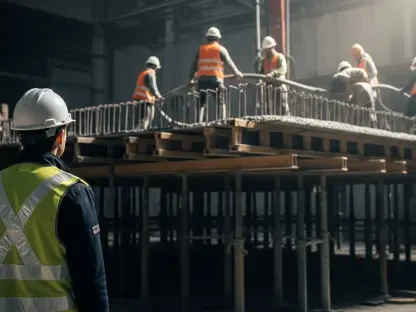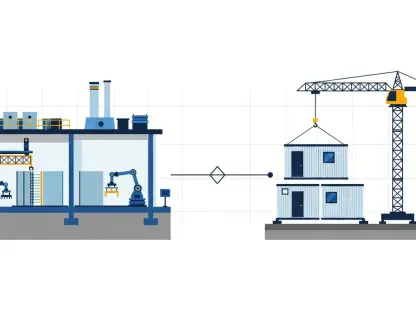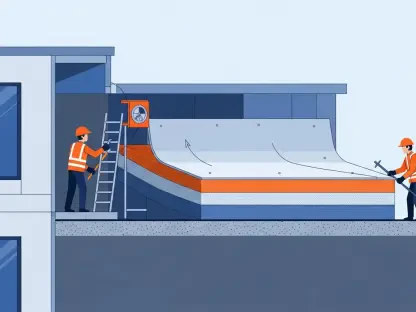The Australian residential construction sector is currently grappling with a significant crisis, marked by a worrying increase in builder bankruptcies that leaves homeowners and consumers facing considerable financial losses. This unsettling trend not only impacts those currently in the midst of building or renovating their homes but also sheds light on systemic issues within the industry, emphasizing an urgent need for comprehensive reform. With countless Australians finding their dreams of homeownership dashed, the severity of these builder bankruptcies cannot be understated.
Consumer Vulnerability in Uncertain Times
Homebuilding and renovating are typically among the most substantial financial undertakings for Australian consumers, yet the protection for these investments is strikingly insufficient compared to other major financial commitments like superannuation or banking deposits. When a builder goes bankrupt, homeowners often become unsecured creditors, meaning they line up behind secured creditors such as banks to collect any remaining assets. This leaves them with little chance of recouping their deposits or seeing their housing projects completed.
Many consumers find themselves entangled in lengthy insolvency processes, enduring the stress and uncertainty of financial loss and incomplete home projects. The lack of robust financial protections for such significant investments is alarming and underscores the urgent need for better safeguards within the sector. Without substantive changes, homeowners continue to bear the brunt of these financial collapses, finding themselves at a severe disadvantage in an already volatile market.
Industry Instability and Economic Pressures
The demand for new housing in Australia has never been higher, driven by rising immigration rates and a cultural shift towards smaller household sizes. Despite this robust demand, the residential construction industry is hobbling, plagued by financial instability and a concerning number of company liquidations. The fundamental issue contributing to this instability can be traced to the lingering disruptions from the COVID-19 pandemic. Skilled labor shortages and rising material costs have dealt a significant blow to the industry, exacerbated by traditionally low-profit margins and the prevalence of fixed-price contracts.
These economic pressures make it challenging for builders to adapt to fluctuating costs, often pushing many toward financial ruin. The 2023-2024 financial year saw 2,832 construction companies in Australia go insolvent, the highest of any sector. This alarming figure highlights the urgent need for industry-wide reform to ensure stability and protect vulnerable consumers. The economic landscape is ever-changing, and the construction sector must evolve accordingly to stave off further financial calamities.
Flaws in Financial Practices Within the Industry
A critical issue amplifying the crisis is the financial practices prevalent in the construction industry. Often, builders are known to use consumer deposits for purposes other than their intended function, creating significant risk for homeowners. This lack of transparency can sometimes result in practices resembling Ponzi schemes, where new deposits are used to complete older projects. Such financial mismanagement not only jeopardizes individual projects but also undermines consumer confidence in the entire sector.
Without proper oversight and transparency, homeowners are left in the dark regarding the status of their deposits and the true financial health of their builders. The current system lacks stringent regulations that ensure consumer funds are protected, often leading to severe financial repercussions for consumers. This practice not only puts individual projects in jeopardy but also creates an environment of uncertainty and mistrust, which can have far-reaching consequences for the industry as a whole.
Regulatory Gaps and Financial Protections
Comparatively, the construction sector lacks the stringent regulations that ensure consumer funds are protected, unlike other financial services sectors such as banking deposits or superannuation. Homebuilding deposits are not safeguarded against insolvency risks, leaving consumers exceptionally vulnerable when builders declare bankruptcy. Builder’s insurance, where mandated, often falls short, providing only limited protection and typically coming with restrictive conditions that delay relief.
The case of Porter Davis Homes, where insurance was not even taken out, starkly illustrates these vulnerabilities. Consumers caught in such scenarios find themselves exposed, with no viable recourse to recover their investments quickly. The absence of stringent financial protections and oversight in the construction sector leaves consumers in a perilous position, facing significant financial losses with little hope of swift recovery.
Proposed Solutions and Path Forward
Addressing these systemic issues requires comprehensive and actionable reform. One potential solution lies in adopting financial practices from the broader financial services sector, such as implementing measures to ring-fence consumer funds. In this model, deposits would be placed into project-specific accounts and used solely for their designated purpose, significantly enhancing consumer protection. Promoting transparency and regulatory oversight within the industry would also play a crucial role in restoring confidence and stability.
Ensuring that builders adhere to stringent financial practices and disclose information regarding the handling of funds can help create a more resilient and trustworthy industry. Such measures would safeguard consumer investments, mitigate the risk of future bankruptcies, and foster a more stable environment for both builders and homeowners. By incorporating these reforms, the Australian residential construction sector can better navigate economic uncertainties and protect the interests of consumers.
Conclusion
The Australian residential construction sector is facing a deepening crisis, characterized by an alarming rise in builder bankruptcies. This unsettling trend is not just a statistic; it has real and far-reaching consequences for homeowners and consumers, who are finding themselves dealing with significant financial losses. The impact is particularly harsh for those currently in the midst of building or renovating their homes, as they unexpectedly confront halted projects and unfulfilled dreams. This crisis exposes systemic issues within the industry, highlighting a pressing need for comprehensive reform to safeguard the interests of future homeowners.
The ripple effects of these builder bankruptcies are extensive. Not only do they disrupt the immediate plans and financial stability of individual homeowners, but they also cast a lens on the broader, underlying problems within the Australian construction industry. Many Australians are seeing their aspirations of owning or upgrading their homes shattered, revealing the severity of the situation. This pattern of financial instability among builders necessitates urgent and effective measures to address and rectify the foundational flaws plaguing the sector. Comprehensive reforms and increased oversight are desperately needed to restore consumer confidence and stabilize the industry. Without such interventions, the dream of homeownership will remain out of reach for many Australians, exacerbating an already dire situation.









